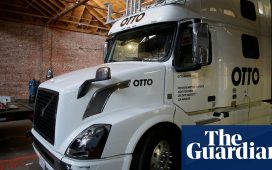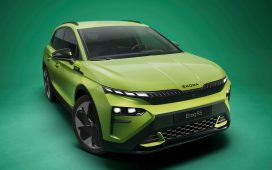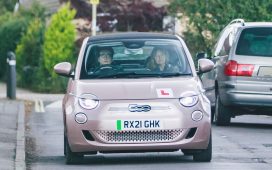Electric vehicles have been gaining popularity quickly during the past few years. As manufacturers come up with new models, more and more people seem to be jumping on the electric bandwagon. As you may be aware, two of the most popular car segments right now are the crossover and the SUV. Since these segments are so successful, manufacturers are putting great effort into producing electric vehicles of this type. Currently, the technology available on electric SUVs and crossovers is amazing. However, believe it or not, these vehicles are still in their infancy. There are still plenty of innovations and technologies left to be discovered. So, if this is just the start, what does the future of electric SUVs and crossovers hold?
What Do Current Electric SUVs And Crossovers Offer?
Front 3/4 view of yellow Lotus Eletre parked.
Current electric SUVs and crossovers offer an array of features that used to be unheard of. It is cool to see the amount of change in this segment in just a matter of a few years. First and foremost, electric SUVs and crossovers have more power than ever. SUVs in particular can now put to shame full-on sports cars or even supercars. Think of the BMW XM Red Label; a somewhat electrified model. With 738 horsepower, this behemoth of an SUV will be faster than some of the fastest vehicles of the not-so-distant pass. The same is true for the smaller crossovers which might not have numbers this crazy, but are still more powerful than ever.
5 Most Powerful Electric SUVs and Crossovers
|
Tesla Model X Plaid |
1,020 horses |
|
Lotus Eletre R |
905 horses |
|
Rivian R1S |
835 horses |
|
GMC Hummer SUV |
830 horses |
|
Mercedes-AMG EQE SUV |
677 horses |
In addition to power, electric SUVs have incredible technologies like autonomous driving. Drivers can now sit back and relax while the vehicle does everything from operating the brakes to steering. Furthermore, infotainment systems with more functions and information than ever are pretty much standard equipment in all modern crossovers and SUVs. Finally, since all-wheel-drive systems are now made from electric motors front and rear, electric cars have more interior space due to a lack of driveshafts while also having much better control over their traction control systems. Electric motors are easier to control when it comes to putting power on the road or dirt which leads to more effective power delivery.
The Future Of EVs Holds More Efficient Batteries And Drivetrains
Front three-quarters shot of a Tesla Model X
As we are sure you are aware, the biggest limitations with EVs are range and charging times. Most SUVs and crossovers currently offer 300-350 miles of range and can recharge to 80% in an average time of roughly one hour. This, however, is only possible if you manage to find a charging station that is powerful enough to deliver such charging times.
5 Crossovers With The Longest Range
|
Tesla Model X |
348 miles |
|
Tesla Model Y |
330 miles |
|
BMW iX |
324 miles |
|
Rivian R1S |
321 miles |
|
Cadillac Lyriq |
312 miles |
In the future, battery technology will improve, and we will have batteries that are both smaller and more efficient. This will lead to faster charging times, more range, and less weight. Furthermore, these smaller batteries might be easily removable in an effort to make them recyclable. Imagine a world where as soon as your battery needs replacing, you can just unplug it (like we used to be able to do with phones and laptops) hand it over to a recycling plant, and get a new one for a discounted price based on the old battery you have just given in. This will not just make owning an electric crossover or SUV more convenient, but it will also make it far kinder towards the environment.
Autonomous Driving Will Become The Norm
Shot of the Tesla Model X’s dashboard and cockpit
SUVs and crossovers are mainly family vehicles, and this means that they often spend a lot of time in congested cities and crowded freeways. As technology improves, so do our autonomous systems which will eventually lead to cars that require zero attention from the driver. At the start, these may only be available on the more upmarket SUVs while the smaller crossovers might have slightly more dated systems that require the attention of the driver more often. These autonomous systems will also be able to communicate with each other knowing what movements the surrounding vehicles are about to make. This will greatly reduce the risk of accidents while also making the SUV and crossover ownership even more convenient.
Electric SUVs And Crossovers Have The Potential To Be Great Off-Roaders
Shot of a blue Rivian R1S parked
The above points apply to SUVs and Crossovers but also to any other type of vehicle. This one, however, is solely for the taller riding category. Sure, crossovers don’t need to be incredible off-roaders, but some SUVs do. Think about it, the SUV category features vehicles like the Land Cruiser and 4Runner which are predominantly sold as off-road-oriented vehicles. Now, the way that these vehicles can become even more capable than they already are is by utilizing a system like the ZF electric solid axle. This is a solid axle that instead of gears in the middle, uses an electric motor to power both wheels on each axle. So, we get the off-road benefits of a solid axle (wheel articulation and overall durability) while also having the benefits of an electric vehicle which include incredible traction control systems and power.
This would mean that vehicles that now utilize a solid rear end and an independent front will have the electric rear solid axles and a conventional electric motor up front power the CV joints that drive the wheels. Of course, we still have the rather big limitation of range in remote off-road trails. However, when battery technology advances to a point where vehicle batteries are small, travelers can take a power bank with them. This will enable charging at a remote location. Imagine this as a jerry can but for an electric SUV.
Electric Crossovers And SUVs Might Work On Hydrogen
The BMW iX5 Hydrogen getting refueled
Our final speculation of what the future of electric crossovers and SUVs hold surrounds hydrogen power. It is highly likely that rather than charging and discharging batteries, companies might end up utilizing hydrogen in order to provide power to the electric motors. This technology is primarily being researched by Toyota who has already produced the hydrogen-powered Mirai. If this technology gets traction, we can keep all the benefits of EVs without the negatives of charging time. It will be the perfect marriage between fast charging and emissions-free driving. This will make electric SUVs and crossovers even more pleasing to own and use.
















